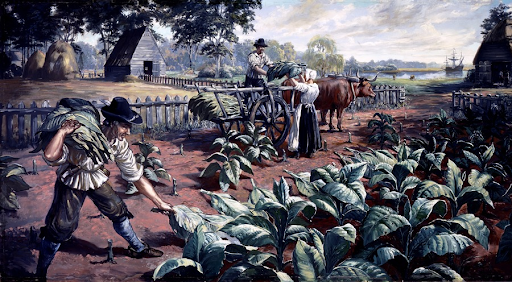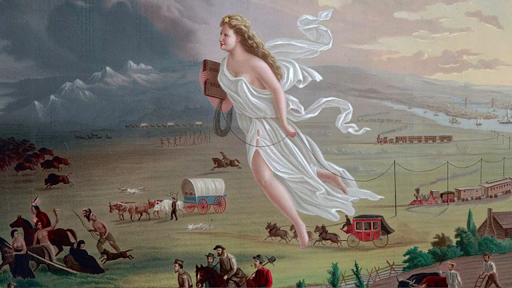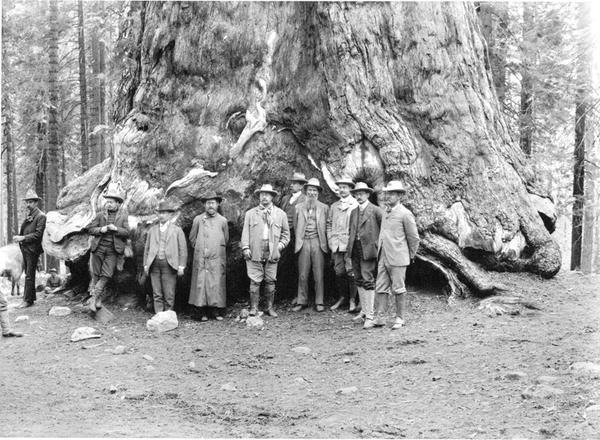Theme 3 (GEO) - Geography and The Environment
5 min read•june 7, 2020
S
Sander Owens
S
Sander Owens
AP US History 🇺🇸
454 resourcesSee Units
The one thing you need to know about this theme:
| Geography and the Environment🌳🌎 Different regions of the US adapted to their environment in different ways over time. Know the same attributes for various regions to differentiate them easily. |
College Board Description
Geographic and environmental factors, including competition over and debates about natural resources, shape the development of America and foster regional diversity. The development of America impacts the environment and reshapes geography, which leads to debates about environmental and geographic issues.
Historical Examples of this Theme
Period 1 (1491-1607)
Native American societies adapted to their environment in different ways before European contact. Societies in the Southwest and Mexico cultivated maize (corn) and developed successful stationary economies. These were frequently stable and well-established communities.
Most tribes on the Great Plains were nomadic and developed mobile lifestyles and moved around with the sources of food. These communities frequently moved around.
In the East and Midwest, societies used a mix of agricultural as well as hunter-gatherer styles. These communities were frequently permanent.
Most Western and Northwestern societies were hunter-gatherers, and took advantage of the plentiful seafood in the Pacific. This often resulted in more permanent settlements.
The Columbian Exchange is one of the most crucial environmental processes in this time period. Crops were exchanged between America and Europe that caused an explosion in European population growth. This came in addition to diseases from Europe being spread to the Americas, which resulted in massive population death among native populations. This led to the rise of capitalism in Europe.
Improvements in technology such as the Portuguese caravel, a new type of ship, as well as more organized trade, such as joint stock companies, resulted in the transformation of economies.
Period 2 (1607-1754)
The Southern colonies (Maryland, Virginia, the Carolinas, Georgia) were focused around exporting cash crops, especially tobacco. This was because they had the most fertile soil. Most labor was indentured servants at first, and then African slaves. British colonies in the West Indies (Caribbean) also cultivated cash crops, especially sugar, on large plantations, also relying on African labor.
Image Courtesy to History of Virginia

The New England colonies, Massachusetts, New Hampshire, Rhode Island, and Connecticut, were primarily settled by Pilgrim and Puritan families seeking religious freedom. Most of the agriculture was on a small family or subsistence scale (just enough to feed the producers). This meant that most economic activity was commerce or small-scale agriculture. Agriculture on a larger scale was also not possible because of the rocky soil.
The middle colonies, New York, Pennsylvania, Delaware, and New Jersey, primarily exported cereal crops, or grains, and were the most diverse colonies, with leaders such as Lord Baltimore of Maryland pushing for religious tolerance, which led to migrants from all over Europe.
Period 4 (1800-1848)
Geography and the environment played a big role in the development of the South in the first half of the 1800s, owing to the fact that the South was a largely agricultural/agricultural-industrial economy, which relied heavily on the land.
Although only the plantation elite owned slaves, most Southern leaders argued that slavery was integral to Southern life. This was because these large plantations provided most of the economic growth of the South, as many smaller farms were either solely subsistence or only conducted local commerce. The Southern economy as a whole was still heavily agricultural, still focusing on staple crops and tobacco. This was core to the agrarian Southern identity.
As land in the Deep South was depleted, slavery began to spread west of the Appalachian mountains into Oklahoma, Arkansas, Texas, and other Southern Plains states as agriculture also expanded west.
Period 5 (1844-1877)
Manifest Destiny, or the idea of “sea to shining sea,” and that America was the superior system of government, was crucial to western expansion during this time period, as new infrastructure, such as the transcontinental railroad, meant that westward expansion could happen more quickly than ever before.
Image Courtesy to Khan Academy

Many people moved west to seek economic opportunity, or religious refuge. An example of the former would be the allure of precious minerals such as in the California Gold Rush, and an example of religious refuge would be Joseph Smith and the Mormons. With new legislation guaranteeing land and property such as the Homestead Act, which granted settlers 160 acres of Western land, people moved west with the goal of achieving economic success.
Ties with Asia also increased during this time period because the US wanted to expand trade. The most notable of these was Commodore Matthew Perry’s exploration across the Pacific to Japan, which stimulated the previously-isolated Japan’s industrialization.
Period 7 (1890-1945)
During this time, people debated about how natural resources should be used. Among those in support of sustaining the environment, preservationists advocated for keeping the wild exactly the way it was, whereas conservationists advocated for wise use of the resources.
Image Courtesy of Muir Way

John Muir, a notable early preservationist, and his Sierra Club advocated for keeping the environment untouched, whereas conservationists such as President Theodore Roosevelt advocated for smart use such as camping, sustainable logging, and other activities that could bring economic benefits to small towns. A balance of the two eventually resulted in the national park system we have today.
Period 8 (1945-1980)
Oil crises in the Middle East as well as rising military tensions such as those in the Middle East, in countries like Kuwait, meant that the US formed a national energy policy about the sourcing and trade of oil.
Environmental disasters, such as nuclear accidents, waste spills, and other contamination led to a growing environmental movement, exemplified by author Rachel Carson’s book Silent Spring that led to a new “green” movement aimed at curbing pollution and preserving natural resources. The government established new agencies, such as the Environmental Protection Agency and new legislation in accordance with these movements that created smarter ways to use water and other geologic resources.
Sample Questions
Sample MCQ
Which of the following ideologies could be used to support the event depicted above?
- The Enlightenment
- The Second Great Awakening
- Manifest Destiny
- The Market Revolution
Sample SAQ
- Name one similarity in the way different regions of the American colonies adapted to their environment in the period from 1607-1754.
- Name one difference in the way different regions of the American colonies adapted to their environment from 1607-1754.
- Name another difference in the way different regions of the American colonies adapted to their environment from 1607-1754.
Sample LEQ
Evaluate the extent to which the environment shaped American westward expansion from 1803-1898.
Browse Study Guides By Unit
🌽Unit 1 – Interactions North America, 1491-1607
🦃Unit 2 – Colonial Society, 1607-1754
🔫Unit 3 – Conflict & American Independence, 1754-1800
🐎Unit 4 – American Expansion, 1800-1848
💣Unit 5 – Civil War & Reconstruction, 1848-1877
🚂Unit 6 – Industrialization & the Gilded Age, 1865-1898
🌎Unit 7 – Conflict in the Early 20th Century, 1890-1945
🥶Unit 8 – The Postwar Period & Cold War, 1945-1980
📲Unit 9 – Entering Into the 21st Century, 1980-Present
🚀Thematic Guides
🧐Multiple Choice Questions (MCQ)
📋Short Answer Questions (SAQ)
📝Long Essay Questions (LEQ)
📑Document Based Questions (DBQ)
📆Big Reviews: Finals & Exam Prep
✍️Exam Skills (MC, SAQ, LEQ, DBQ)

© 2025 Fiveable Inc. All rights reserved.